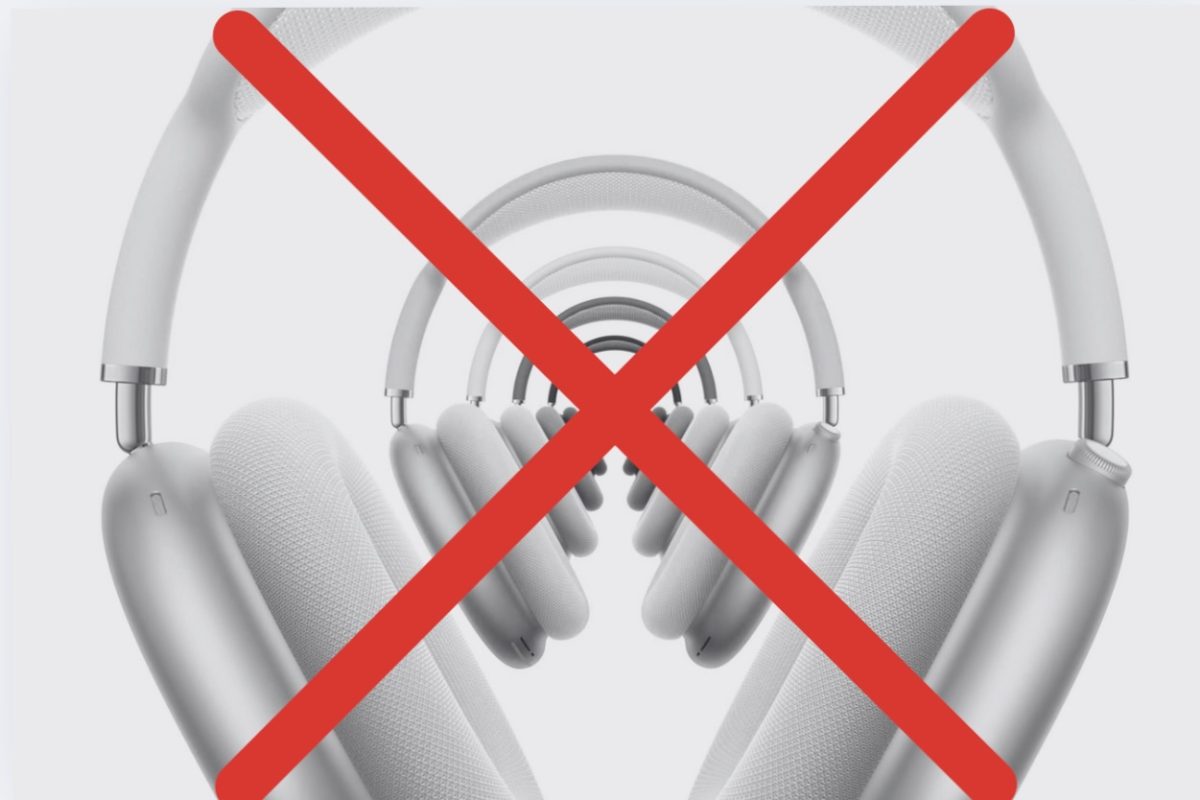Walking to the Apple store, you excitedly step through the glass doors, eager to see the latest generation of products. A bright, bold display showcases the long-awaited update to the AirPods Max. You grab a sample pair, ready to see what Apple has spent four entire years developing – only to find that the sole new feature is USB-C charging.
For the past several years, Apple has consistently released “new” products that feel more like minor updates than true innovations. Take, for example, the 2024 release of the AirPods Max.
The original AirPods Max, released in 2020, was notorious for its clunky design and uncomfortable fit – widely criticized as a major drawback. Weighing 385 grams, the headphone’s solid metal frame added significant bulk, while its cushioning failed to provide the necessary support. Another flaw was the soft, flimsy travel case, which barely covered the headphones, making them extremely inconvenient to carry around. Despite these issues, Apple still charged a steep $550, offering little justification for the high price tag.
These were all issues customers were eager to see addressed in the new model. So what did Apple actually change? The only updates were a new charging port and five additional color options. Worse yet, nearly all of Apple’s latest audio products have the H2 chip – except for these new headphones. The H2 chip offers significant improvement in inactive noise cancellation (ANC), transparency mode and battery life, yet Apple chose to leave it out. Plus, of course, the price remains unchanged.
The new AirPods Gen 4 continue this trend of underwhelming updates. Apple claims the slightly altered shape provides a better fit, but in reality, the difference is barely noticeable once they’re in your ears. Some tech reviewers have even reported that minor facial movements can cause the AirPods Gen 4 to fall out.
Right now, Apple offers two versions of the AirPods Gen 4: a $129 model without ANC or Active Transparency and a $179 model with both features. $50 for ANC seems steep, and tech reviewers seem to have mixed thoughts on it. On one hand, the ANC is very impressive for an open-ear design. On the other hand, the frequent slipping and shifting of the Airpods disrupts noise cancellation, making them unreliable in the very common situations ANC would typically be used in, such as in cities or on airplanes. Ultimately, the ANC performance pales in comparison to the AirPods Pro Gen 2.
Speaking of the AirPods Pro Gen 2, they are widely regarded as Apple’s best listening experience – but, they still come with a steep price of $249. It seems that if an Apple consumer wants a set of wireless headphones or earbuds, they are left with pricey and frustrating options. They can either spend $550 on a bulky, heavy and uncomfortable pair of headphones that are difficult to carry around or shell out $249 for wireless earbuds locked behind a premium price. This pricing structure seems designed to push consumers toward the AirPods Gen 4 as a more “affordable” ANC option, despite its deeply flawed design and performance
Compared to competing products, Apple’s pricing feels even more unreasonable. Take, for example, the Beats Studio Buds +. At 169$, they are the closest in price to the AirPods Gen 4 with ANC, yet they significantly outperform them. This review from SOUNDGUYS shows that the Beats Studio Buds + have an 80% noise isolation with ANC due to their gel tips, while the Airpods Gen 4 only achieves an average of 53%. For $10 less, the Beats Studio Buds + integrate well into the Apple ecosystem, support Android and provide a more consistent and well-rounded experience.
Apple has a long history of releasing new products that have minimal upgrades, often lagging behind competitors while maintaining high prices. This latest round of releases continues the trend—offering more of the same, making negligible improvements and expecting consumers to pay top dollar for minor changes.

![During the WHS club fair, senior Molly Bergeron is watching a student sign up for her club, Eliza J. Norton Foundation. In this club, students meet every week and come up with ideas to spread the message. "[This club] really touches a lot of people in the town," Bergeron said.](https://waylandstudentpress.com/wp-content/uploads/2025/10/IMG_1335-1200x800.jpg)



























